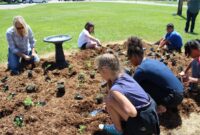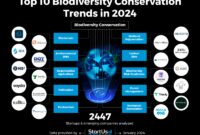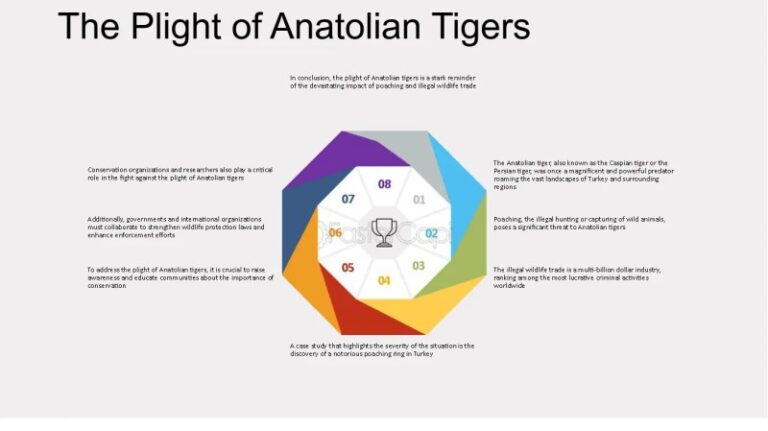Habitat Preservation – Why we should focus on conservation through habitat protection rather than captive breeding 4 years ago 2.1K views
Help keep One Green Planet free and independent! Together we can ensure our platform remains a center empowering ideas dedicated to fighting for a sustainable, healthy, and compassionate world. Please support us in staying true to our mission.
Habitat Preservation

The world’s species are going extinct 1,000 times faster than they should be – and humans are to blame. To protect certain species, some zoos and wildlife sanctuaries have implemented captive breeding and reintroduction programs, which the Association of Zoos and Aquariums says will help stabilize or rebuild animal populations. But there are also some zoos that keep animals only to maintain the stability of captive populations, with no intention of releasing the animals into the wild.
Slow Start For Europe’s New Habitat Protection Plan
It’s actually common for adult animals to be sent to other zoos for breeding – giant pandas, for example, have been kept in captivity for decades – and in some cases the animals are even artificially inseminated to ensure pregnancies, something they obviously wouldn’t do in the wild occur. All of this is done in the name of conservation, but unfortunately many of these animals will end their lives in captivity rather than in their natural habitat.
Even if they are intended to be released into the wild, captive breeding programs will not be effective if their natural habitat is completely destroyed. If we want to save the world’s species from extinction, we need to focus on protecting wild populations and protecting their natural habitats.
Natural habitats are being destroyed at an alarming rate. Rainforests, which produce 40% of the earth’s oxygen and are home to more than half of the world’s species, will disappear within the next 100 years if deforestation continues at current rates.
Deforestation in Indonesia has wiped out half of Sumatra’s forests, putting animals such as orangutans, Sumatran tigers and rhinos at risk of extinction. Palm oil production is one of the causes of this habitat loss, as is logging for paper.
Protecting Vital Habitats
Livestock farming is another cause of habitat destruction, with 26% of the world’s land being cleared for cattle grazing. Land loss due to human expansion and urbanization has also forced wildlife into densely populated areas, triggering human-animal conflicts. In agricultural areas around the world, species considered a threat to livestock are regularly killed and their populations rapidly reduced.
Zoos release some captive animals back into the wild in hopes of boosting their numbers, but that doesn’t necessarily work. A 2008 study of captive carnivores found that most died after being released into the wild due to both man-made and natural causes. Studies have also found that animals raised in captivity are more susceptible to disease and more likely to die of starvation than animals born in the wild.
Born Free, an international organization dedicated to protecting species, said that “reliance on captive populations lulls us into a false sense of security and distracts from the threats that wild populations and habitats face if not addressed.” Conservation, wild populations and habitats may be destroyed without leaving “a viable place to return.” “
As a result, habitats are destroyed, captive breeding programs don’t always work, and animals don’t have the best survival rates even when released. While some of these attempts to maintain populations may have the best of intentions, is this really what’s best for the animals?
Why It’s Critical To Protect Wildlife And Endangered Species
No matter how hard a zoo tries to replicate a natural habitat or provide enrichment activities for its animals, life in captivity can never compare to life in the wild. It’s not natural to be fascinated or for people to stare at you through glass walls. In fact, this situation is often very stressful for the animals.
Animals in captivity may suffer from a condition called “zoonosis,” in which they display repetitive stress-induced behaviors such as beatings, self-mutilation, and excessive grooming. These behaviors often appear in videos posted on social media by zoo visitors who mistakenly believe the animals are “dancing” or doing something “cute.” So while animals in zoos give current and future generations the opportunity to see a variety of magnificent creatures up close, is this really the ethical thing to do?
We can certainly do better for animals. By making more sustainable choices when shopping, we can do our part to help reduce deforestation and keep animals in their homes. It’s easier than you think. Avoiding packaged foods containing palm oil is one way to start. Eating less meat will not only affect the rate of deforestation, but also the pollution of soil and water sources. You can also support organizations working to protect natural habitats and ensure there is a place for all animals.
For more animal, earth, life, vegan food, health, and recipe content published daily, sign up for the One Green Planet newsletter! Finally, public funding gives us a greater chance of continuing to provide you with high-quality content. Please consider supporting us with a donation!
Balancing Stump Grinding And Wildlife Habitat Preservation: An Essential Guide
Public funding gives us a greater chance of continuing to provide you with high-quality content. Click here to support us Our planet’s amazing wildlife spans equally diverse habitats, from frozen tundra to scorching deserts. When these habitats are threatened, so are the plants and animals that call these places home. For decades, wildlife organizations have played a leading role in developing smart policies to protect and restore wildlife and habitats on land and water across the country. Much of our habitat work is focused on our national wildlife refuges, national forests, national monuments, and other public lands and waters because these areas are the last and best places for wildlife to thrive. We also work extensively on private lands in partnership with private landowners and state and tribal agencies to encourage conservation and restoration of critical habitat on private, tribal, and Crown lands.
We work with conservation partners and agencies across the country to identify and protect habitat connectivity for a wide range of species.
We work to protect public wild lands and waters, including national wildlife refuges, national forests and grasslands, national monuments and national marine sanctuaries.

From the Pacific Ocean to the Gulf of Mexico, the 2,000-mile U.S.-Mexico border runs through biodiversity-rich areas and conservation communities where, for decades, people have worked together to restore endangered habitats and wildlife, keep connections intact, and protect them. Large natural area
The Importance Of Habitat Restoration And How Pollinator Programs Support It
Wildlife groups oppose the latest attempt to weaken our country’s clear environmental laws and allow oil, gas and other extractive industries to harm wildlife
Sign up to get the latest news about endangered animals and how to take action to help them survive. You’ll also receive our monthly newsletter and exclusive invitations to special events in your community. Elsa Scott is the Marketing Coordinator and Copywriter for Best Bees. She graduated from Boston University School of Communication in 2022 with a BA in Journalism. Elsa has extensive experience using research and interviews to create engaging content. She writes the Best Bees newsletter, Hive visit follow-up emails, web content and blog posts; she also works closely with the research and development team as a copy editor for Best Bees research articles in scientific publications.
Climate change, industrialization and population growth are having a huge impact on our planet. We can see these effects in wetlands, tundra, deserts, forests, grasslands, oceans, and more. Humanity currently uses the equivalent of 1.75 Earths of resources to sustain our current lifestyle, and our planet’s ecosystems are unable to meet our needs.
According to the United Nations, we lost approximately 10 million hectares of forest (an area the size of Iceland) every year between 2015 and 2020, and more than two-thirds of the world’s marine ecosystems were damaged, degraded or changed.
The Habitat Conservation Fund Has Been Protected • Syrcl
The loss of ecosystems and species results in the loss of human and natural benefits. From an economic perspective, if ecosystem services continue to decline, it is estimated that global GDP could lose $10 trillion by 2050.
Habitat restoration and endangered species protection is a key initiative needed to combat ecological degradation and mitigate the harmful effects of climate change.
The United Nations defines habitat restoration as “the process of halting and reversing degradation, thereby improving ecosystem services and restoring biodiversity. Restoring ecosystems encompasses a broad range of practices, depending on local conditions and social choices.” Restoration enables sites to Again providing food and shelter for wildlife and providing ecological services such as reduced runoff, increased water filtration, improved carbon emissions absorption, and more.

Modern realities now mean that restoring natural areas to some ideal state of the past is an impossible goal. We cannot allow Washington, D.C., to return to a swamp, or any of our other metropolitan areas to their former state. The goals of habitat restoration are to correct or reduce harmful human impacts and promote the flourishing of diverse and resilient natural areas
Habitat Conservation Lease Program
Data preservation, habitat preservation definition, wetland preservation, preservation nation, animal habitat preservation, habitat preservation examples, habitat for humanity home preservation program, puente hills habitat preservation authority, placenta preservation, what is habitat preservation, family preservation, cedar preservation
- Dog Socialization Care Guide - August 11, 2024
- Best Dog-friendly Vacations - August 11, 2024
- Wildlife Conservation Organizations - August 10, 2024








